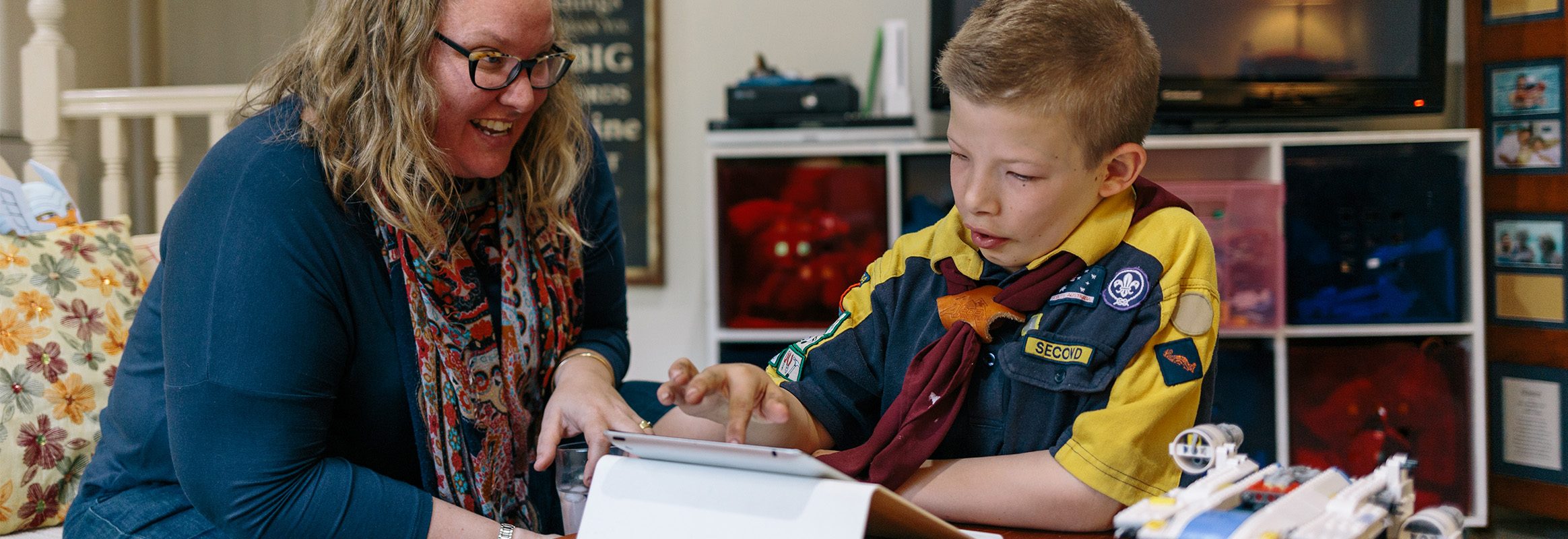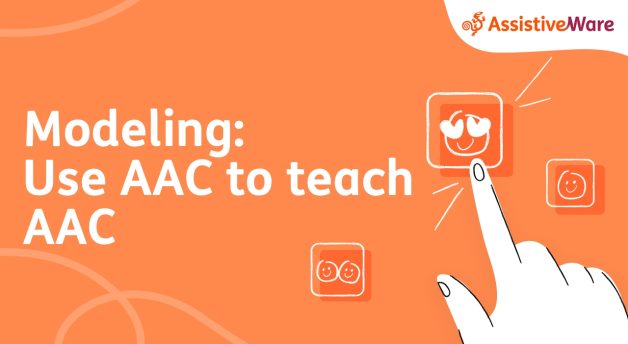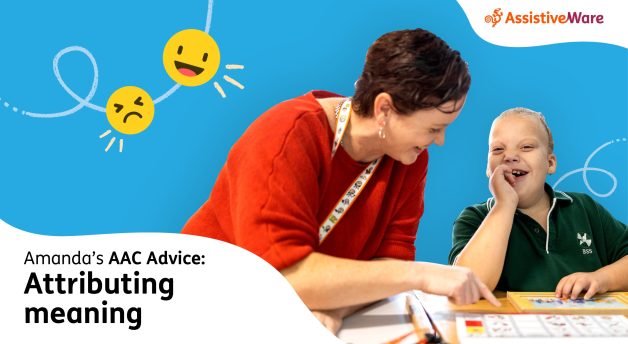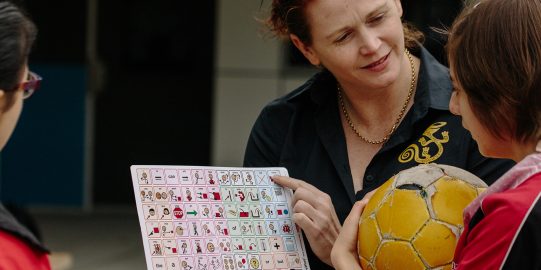Anyone can be a communication partner. We can all have a role in supporting AAC. And this is an important job. What we do counts; what we think is important and how we respond matters. Communication partners wait, listen, and respond. Communication partners must use every interaction as an opportunity to grow language and communication.
This article focuses on how we can build communication partner skills in our teams for symbol-based AAC users.
Key values of a good communication partner
Good communication partners have some things in common. Their values include:
- Presuming competence. We provide opportunities for AAC users to become successful communicators.
- Being flexible. We are ready to adapt and change in response to the situation and the learner’s communication.
- Being persistent. We keep working on communication.
- Being consistent. We use the AAC user’s communication system regularly and reliably.
- Engaging and interacting with AAC users. We provide real and motivating reasons to communicate.
- Being patient and allowing time for communication to happen.
- Providing a balanced AAC system. This allows AAC users to communicate using core words, fringe vocabulary, and the alphabet for various reasons.
- Make AAC always available.
- Being Respectful. Focusing support to meet the AAC needs.
6 ways to build communication partner skills
There are many ways that we, as communication partners, can build our skills so we better support an AAC user.
1. Learn how to model
AAC users must see what it looks like to communicate with their AAC systems in real conversations. To do this, we need to talk to them using their AAC! We point to words on AAC as we speak. This is called modeling. Being a good communication partner means that we model AAC. It might feel difficult initially, but the more we model, the easier and more natural it will become. Regular and reliable modeling also improves the chances that the AAC user will learn to use their AAC system to communicate what matters to them.
Here are some tips to get started modeling:
- Model regularly and consistently.
- Model across different contexts and environments.
- Point to the key words in the sentence. We do not need to model every word we say.
- Model a wide range of communication functions. For example, not just requesting but also giving opinions, telling news, having conversations, etc.
- Use a slow pace as we show the AAC.
- Use self-talk as we model. Talk about what we are doing and what folders we are opening to find the word.
- Have printed paper-based AAC available to model on. This is good for situations where the communication device might not be appropriate or available. (e.g., at the pool).
Common mistakes when modeling:
- Continue modeling even if the communicator is not watching you.
- We may need to model the same words in the same situations often. One is not enough.
- The AAC user may not always respond or reply. Continue modeling.
- We don’t need to make the AAC user copy what we modeled.
The AssistiveWare Core Word Classroom may help if you are just starting modeling. Look for Core Word Planners and Core Word 5-Minute Fillers for ideas on what to model.





